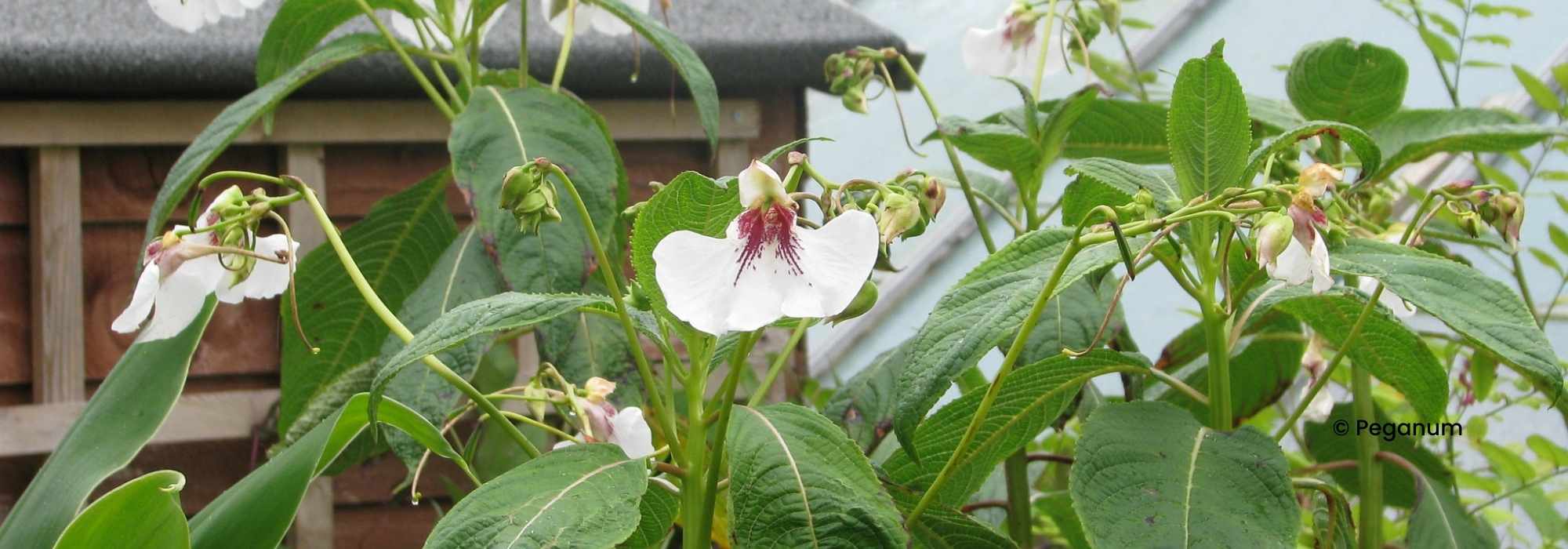
Perennial Impatiens: Planting and Care
Contents
Perennial impatiens in a few words
- They boast an exotic and refined flowering appearance
- They flower from late summer until the onset of autumn
- They form bushy clumps, either low or tall depending on the species
- These are hardy plants that add an exotic touch to shady corners of the garden
- They thrive in humus-bearing soil that must remain moist, in partial shade or full shade
The word from our expert
Impatiens or Busy Lizzies, also known as perennial Balsams, are ideal plants for cool, partially shaded or shaded spots in the garden. Their late flowering period runs from late August until the first frosts. With their curious, elf-cap-shaped flowers reminiscent of orchids and their lush foliage, they add an exotic touch to the garden. These impatiens, different from the annual varieties we grow on our terraces and balconies, reveal their atypical flowers in autumn. Most impatiens are frost-sensitive. Among the balsams capable of withstanding normal winters, Impatiens omeiana or Mount Omei impatiens, and Impatiens tinctoria, stand out, displaying a respectable hardiness of 12 to 15°C, provided their stumps are protected in winter with a thick organic mulch. All thrive in humus-bearing soils that remain moist and in partially shaded positions, adapting well to container planting. One spreads to form beautiful low, bushy clumps, making it an excellent ground cover for woodland areas, while the other, Impatiens tinctoria, is a giant species forming a bush nearly 3 metres tall in a single season. Both disappear in winter and reappear in spring. Hardy and easy to grow, discover these rare impatiens with their exotic charm!
Description and Botany
Botanical data
- Latin name Impatiens
- Family Balsaminaceae
- Common name balsam, Impatiens
- Flowering August to November depending on the variety
- Height 0.45 to 3 m
- Sun exposure shade, partial shade
- Soil type Clay-loam (rich and light), moist, well-drained
- Hardiness -10°C/-15°C
The Impatiens or Balsams, also known as perennial Balsams, are herbaceous plants from the Balsaminaceae family, much like our annual impatiens that adorn our terraces and balconies in planters or pots. The genus includes nearly 1000 botanical species, ranging from slightly hardy perennials to annuals, along with numerous hybrids. They originate from New Guinea, Sri Lanka, Asia, Africa, and certain regions of the Himalayas. Most are tender annuals and thus generally prefer mild climates, but there are some perennial species with rhizomatous roots that offer good hardiness. Among these rare curiosities in cultivation, capable of surviving moderately harsh winters, are Impatiens omeiana or Mount Omei impatiens, a stunning ground cover, and Impatiens tinctoria, a tall species from African tropical forests, hardy down to -12/-15°C under protective mulch.
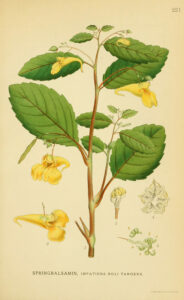
Impatiens Noli tangere (botanical plate circa 1920)
The habit varies by species. Impatiens omeiana forms a bushy clump 35-45 cm tall and about 90 cm wide, while Impatiens tinctoria can reach around 2, or even 3 m in height and 60 cm in width. Fast-growing, they develop a bush with brittle, more or less branched and fleshy stems. The deciduous and abundant foliage emerges in spring and disappears in winter. It consists of lanceolate leaves, pointed at the tip, with serrated margins. Impatiens omeiana stands out for its lush, exotic-looking foliage. The lamina features prominent veins and is a glossy dark green, sometimes with bluish or silvery-white highlights in Impatiens omeiana ‘Ice Storm’.
Abundant flowering occurs from August to November. They typically bloom until the first frost. At the top, the flower stalks bear clusters of 3 to 9 small orchid-like flowers. Suspended from long, slender peduncles that make them mobile, they are very elongated and tubular. The irregular corolla consists of 3 sepals, with the posterior one extending into a spur. They have a very distinctive appearance, quite different from the flat flowers of New Guinea impatiens. They emit a light gardenia-like fragrance and are white with a violet throat or yellow, depending on the cultivar. Those of Impatiens tinctoria can measure up to 7 cm. Once pollinated, the flowers turn into small fruits, dehiscent capsules that burst open when touched at maturity, scattering their seeds. These balsam species go dormant in winter and re-emerge in spring.
Impatiens tinctoria is traditionally used for its dye pigments. Impatiens omeiana is an endangered species in its native habitat.
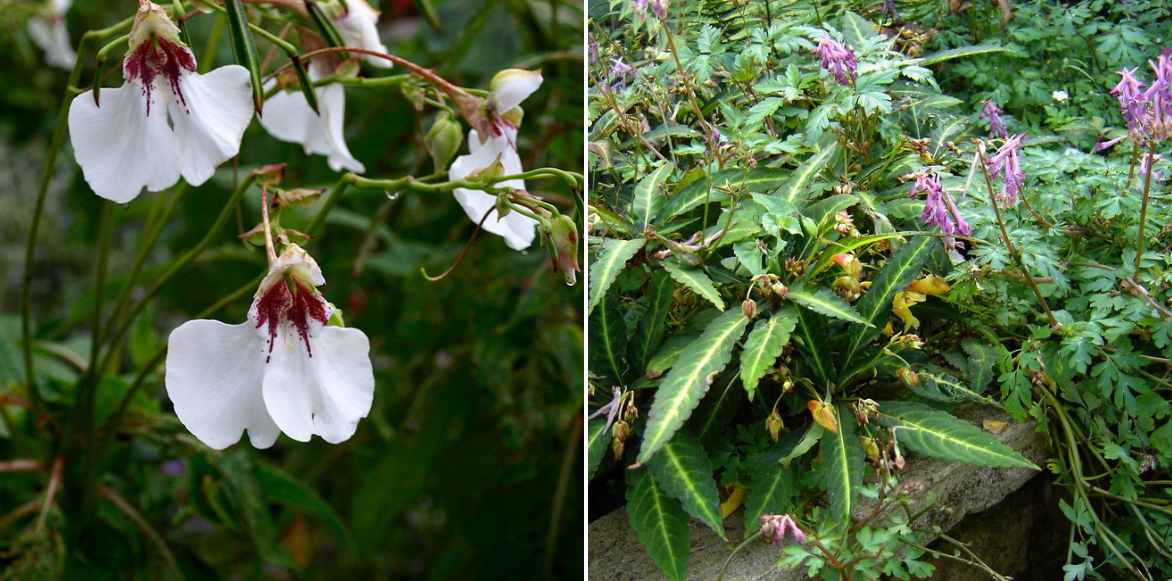
Left, Impatiens tinctoria (©Scott Zona) and right, Impatiens omeiana and Cordyalis (© Peganum)
Main species and varieties
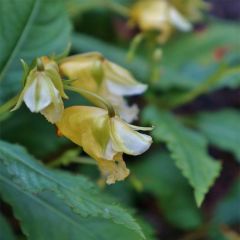
Impatiens omeiana Ice Storm
- Période de floraison October, November
- Hauteur à maturité 45 cm
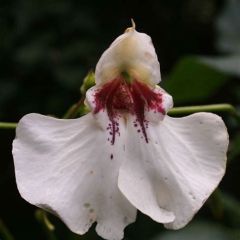
Impatiens tinctoria
- Période de floraison October to December
- Hauteur à maturité 2 m
Planting
Where to Plant?
More cold-resistant than their annual counterparts, perennial impatiens can withstand temperatures as low as -15°C, provided they have a good protective mulch. All impatiens require a cool, even moist, rich, and humus-bearing soil: these are plants adapted to cool woodland settings. They thrive in shade or partial shade and need soil that remains consistently cool to moist in spring and summer but always well-drained, especially during winter. In cooler, rainy regions, they can tolerate light morning sun if the soil remains sufficiently moist. In soils that retain too much moisture or are clay-heavy, their rootstocks may rot. This perennial spreads via its rhizomatous stump: ensure enough space around the plant, as they dislike root competition. They are ideal under deciduous trees, in cool flower beds, rockeries, borders, or near water features. They fit perfectly in shaded urban gardens where sunlight is scarce. Impatiens can also be grown in outdoor containers or in dimly lit indoor spaces.
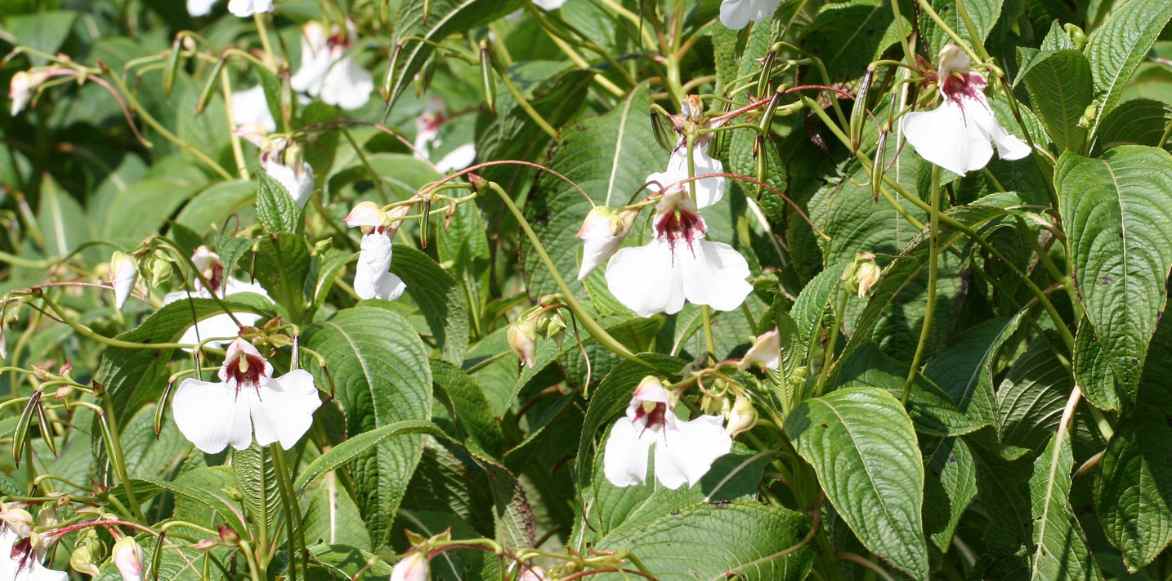
Impatiens tinctoria (© S. Rae)
When to Plant?
Planting perennial balsams is best done in autumn, from October to November, to encourage rooting before winter, or in spring, from March to May, avoiding frost and drought periods.
How to Plant?
In the ground:
These perennial plants will flourish more in humus-rich soil. Add a generous shovel of well-rotted compost or manure at planting time. In heavy soil, incorporate river sand to improve drainage.
- Place the root ball in a basin of water to rehydrate it
- Dig a hole 3 to 5 times wider than the root ball
- Loosen the soil well and add a third of coarse sand at the bottom for drainage
- Position the plant in the centre of the hole
- Fill with a mix of compost, garden soil, and potting soil
- Firm the soil
- Apply a mulch layer
- Water thoroughly and regularly until established
In pots:
The substrate should be well-drained yet rich and retain moisture. Impatiens dislike excessive moisture, which can rot their root system.
- In a container with drainage holes, spread a 3 cm layer of clay pebbles at the bottom
- Plant in a mix of potting soil, optionally blended with garden soil
- Keep the root ball slightly moist at all times
- Adding mulch will help retain substrate moisture in summer
Care, Pruning, and Maintenance of Perennial Impatiens
Perennial impatiens do not tolerate drought but appreciate soil that remains consistently moist. We recommend regular watering in summer, whether they are planted in the ground or in pots. Reduce watering during dormancy. Since they disappear in autumn and only reappear in spring, mark their location. In pots, water very regularly as soon as the soil begins to dry on the surface, but avoid excess to prevent rot. Do not leave water in the saucers.
A layer of organic mulch (linseed flakes, fern fronds, dead leaves, or straw) around the clump will help keep the soil moist for longer and reduce the frequency of watering and weeding. Mulch the stump in spring to keep the roots cool during summer.
In regions with harsh winters, renew this mulch in autumn to protect the plant from severe frosts. Remove the mulch in late March or early April, just before the growing season resumes. If you fear very severe frosts in harsh regions, you can dig up the tubercles in autumn and store them in dry sand over winter.
In poor soil, add a good layer of well-decomposed compost or crushed horn or dried blood by lightly working it into the soil around the plants each year in early spring.
Remove faded flowers regularly to encourage impatiens to rebloom.
The giant Impatiens tinctoria can be pruned once a year in May-June, which will stimulate the growth of new stems and promote abundant late flowering.
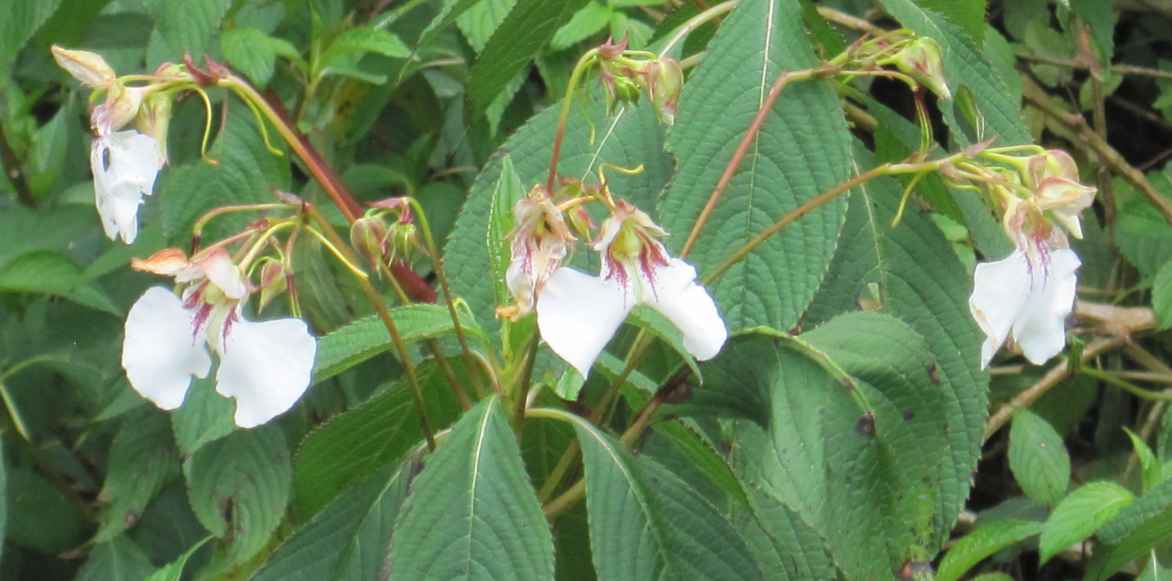
Impatiens tinctoria (© Juniperus_scopulorum)
Diseases and potential pests
In case of excess moisture, botrytis can affect the flower buds. If you notice infestations of red spider mites (common in plants grown in greenhouses), spray the foliage to eliminate them.
Multiplication
The perennial impatiens can be propagated by division in spring or autumn. Choose a well-established plant that has been in place for several years.
- Using a garden fork, lift a portion of the stump by levering
- With a clean, sharp blade, take pieces of rootstock, each with a leaf bud
- Replant immediately in the ground or in a pot with moist soil
- Water generously
Propagation by herbaceous cuttings in June is also possible:
- Cut stems about ten centimetres long
- Place them in a glass of water
- Once roots appear, transplant the cuttings into compost
- Move them to their final location once they are strong enough
Associate
Perennial Impatiens easily find their place in shade gardens, whether in beds or wooded areas. They brighten up even the coolest corners at a time when most other woodland flowers have faded. The Impatiens omeiana forms an excellent ground cover with an exotic appearance in woodland settings, under trees. You can pair it with other ground-cover perennials for shade, such as Heuchera, small ferns, and hostas, which thrive under the same growing conditions and make a striking impact in dappled shade. Japanese anemones will complement its flowering until the onset of winter, as will the Tricyrtis ‘Hirta’, also known as the Toad Lily, with its exotic and refined appearance.
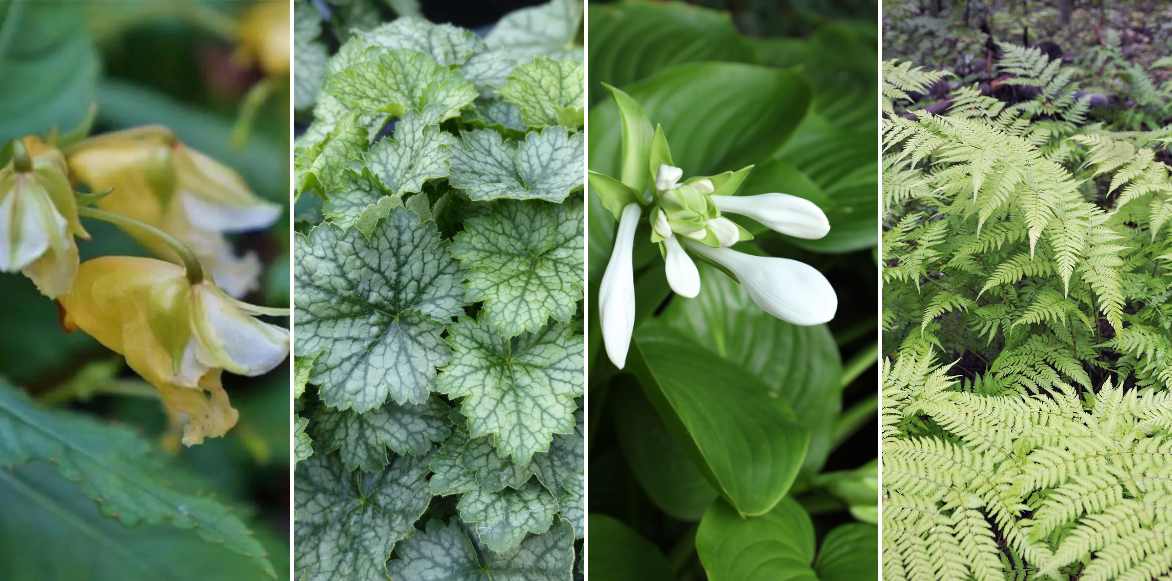
Impatiens omeiana, Heuchera ‘Mint Marquess’, Hosta plantaginea, and Dryopteris Filix Mas fern
With its lush and generous foliage, Impatiens tinctoria has a distinctly exotic flair, perfect for creating a tropical-style garden alongside other luxuriant foliage like that of gunneras, majestic ferns, Rodgersia, and banana plants (Musa basjoo).
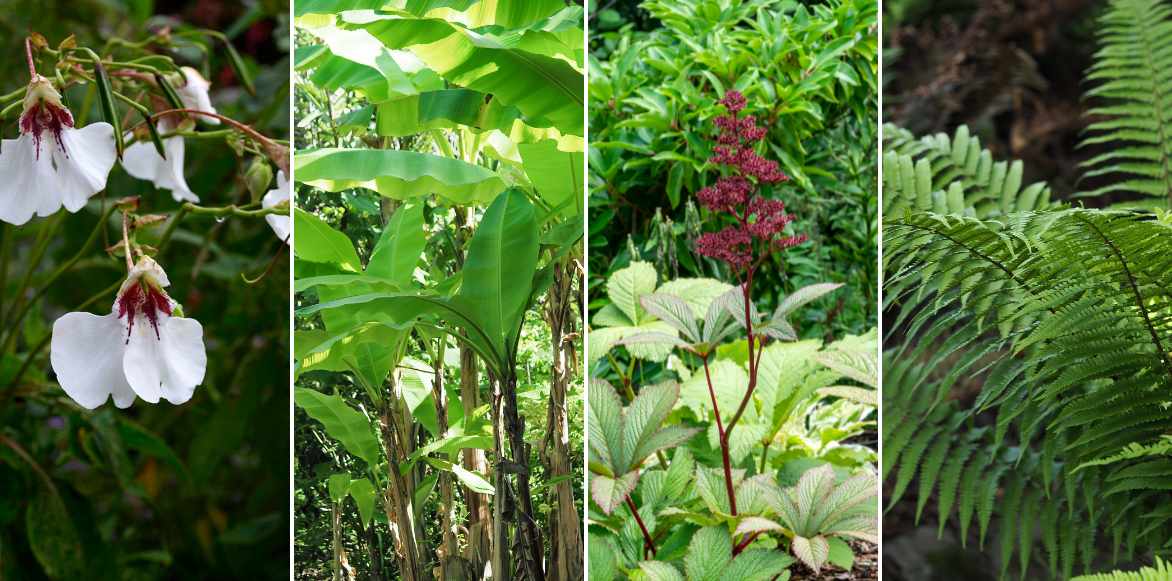
Impatiens tinctoria (© Scott Zona), Musa ‘Basjoo’, Rodgersia pinnata ‘Superba’, and Dryopteris ‘Wallichiana’ fern
Useful resources
- Because there’s always a bare spot in the garden… Consider ground-cover perennials and try our trusted favourites
- Do you have a shady garden or a tricky dark corner to brighten? Discover our tips, plants, and solutions for a shade garden
- Looking to add flowers to a woodland area? Get inspired by our advice sheets “What to Plant Under My Trees?” and our tailored solutions and plants
- Subscribe!
- Contents
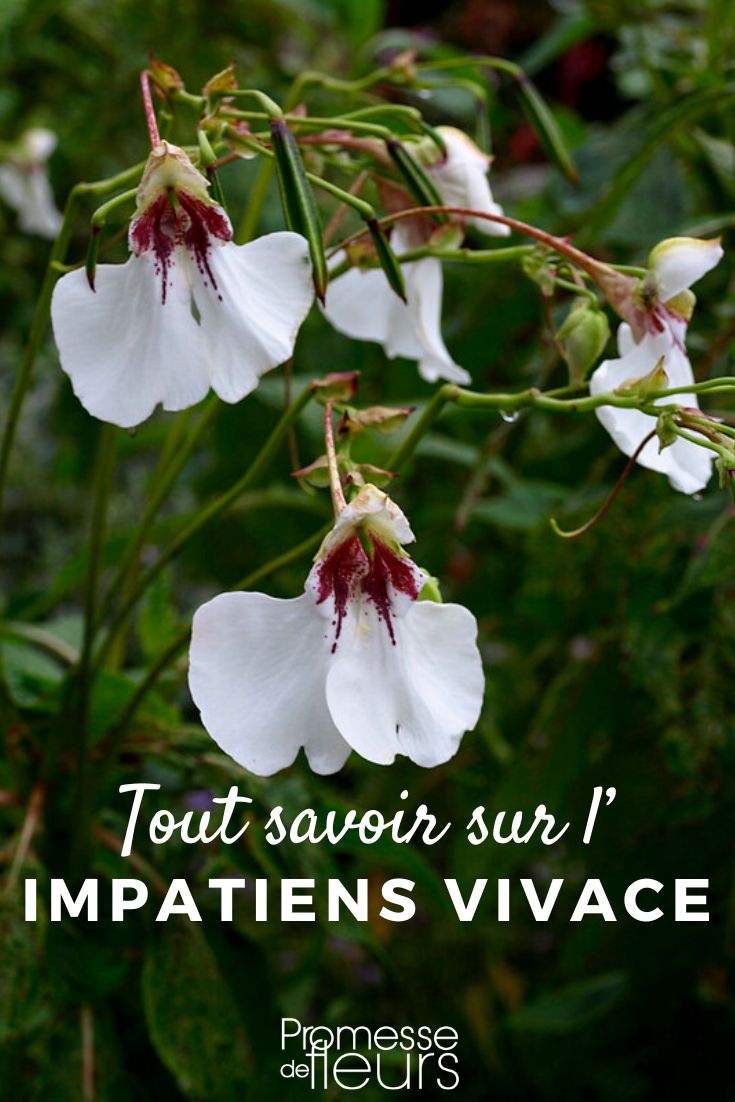































Comments